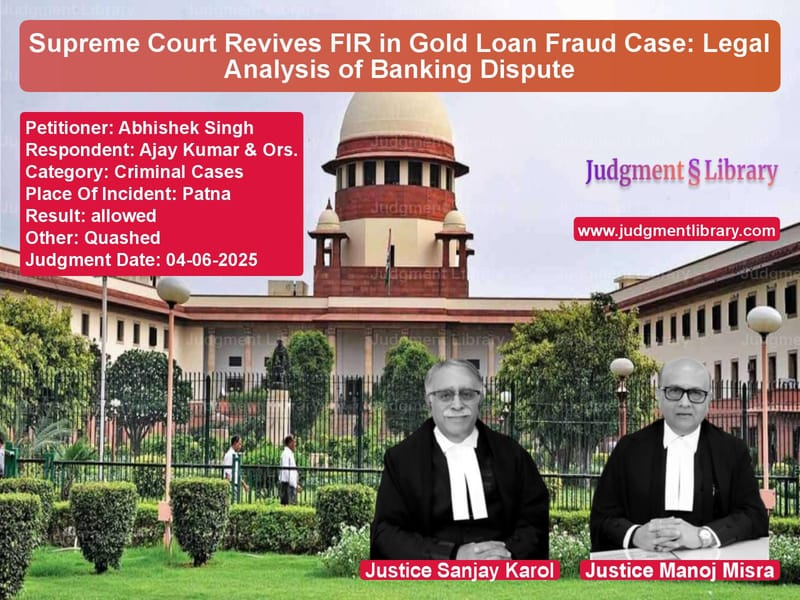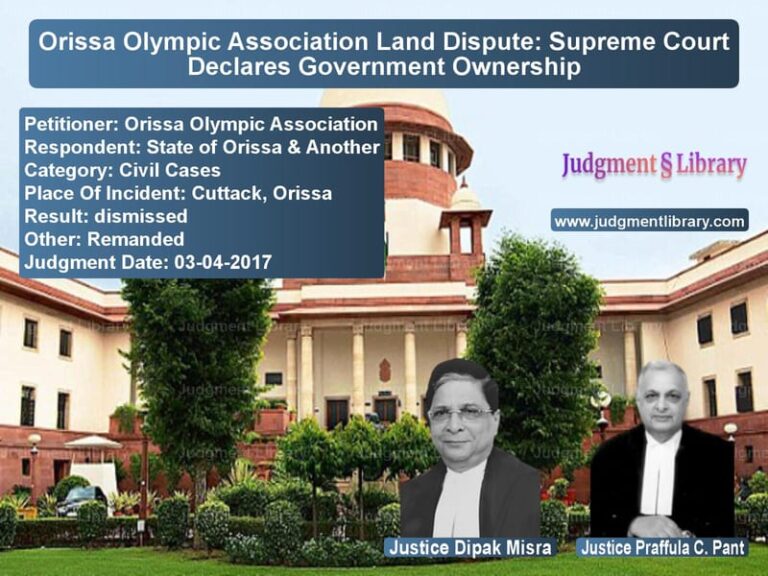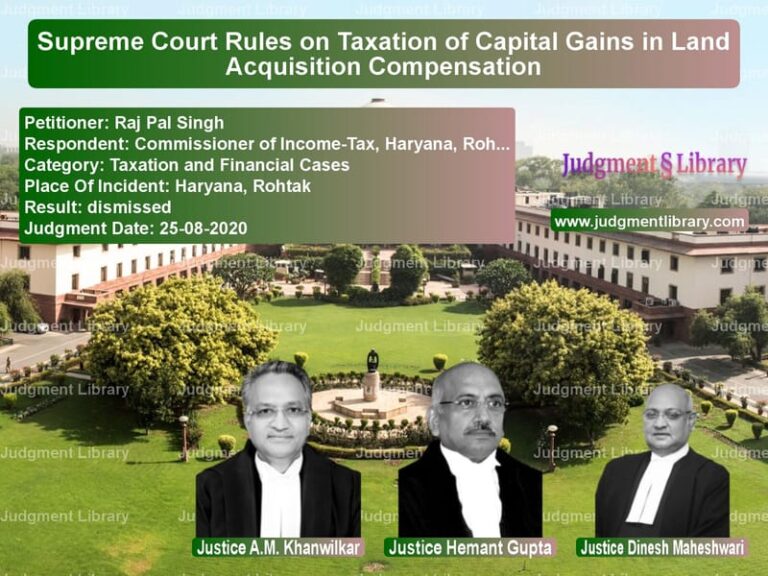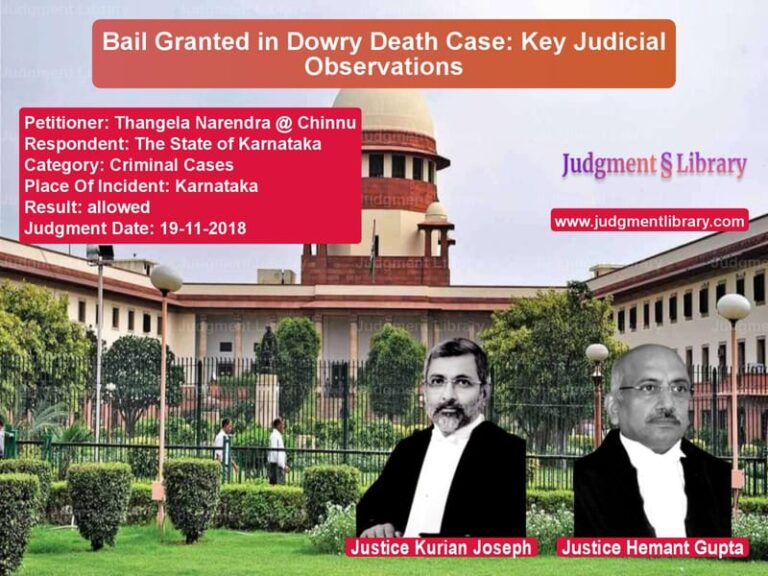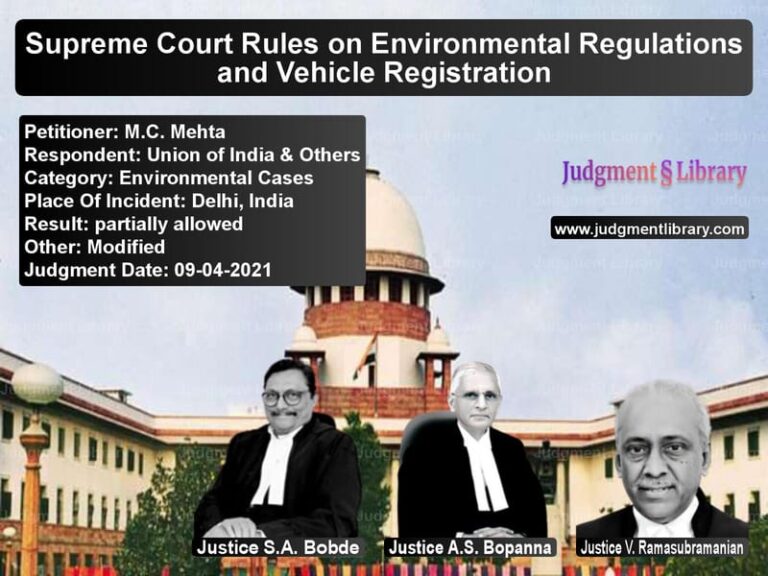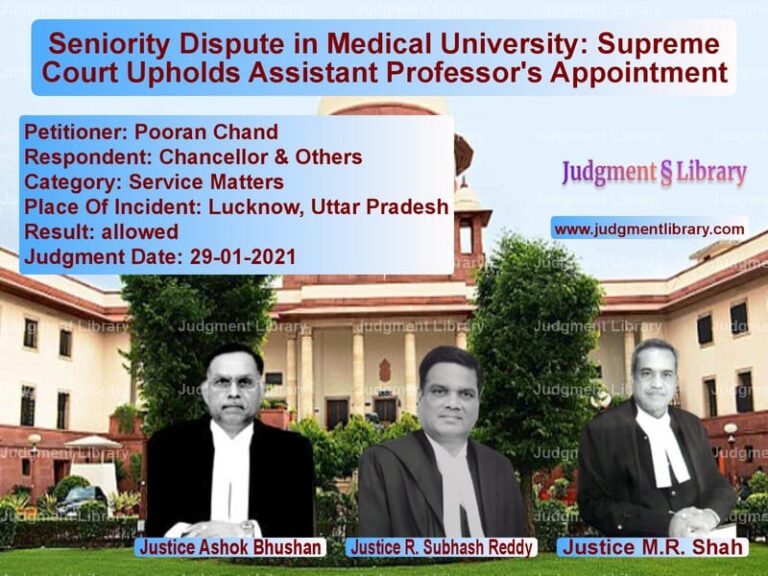Supreme Court Revives FIR in Gold Loan Fraud Case: Legal Analysis of Banking Dispute
The Supreme Court of India recently delivered a significant judgment that has reignited discussions about the limits of judicial power in quashing criminal proceedings. The case involved a complex dispute between a businessman and his bank over a gold loan that took unexpected turns, leading to allegations of fraud from both sides.
The Background of the Case
Abhishek Singh, a businessman, found himself in need of funds and approached the Bank of India’s Motijhil Branch for a loan. On July 22, 2020, he secured a loan of ₹7,70,000 by pledging 254 grams of 22-carat gold ornaments as security. The transaction seemed straightforward until repayment issues emerged, setting off a chain of events that would eventually reach the nation’s highest court.
According to Singh, he received a notice from the bank on October 7, 2022, demanding payment of ₹8,01,383.59, which included accrued interest. He claims to have cleared this amount on March 31, 2023. However, unbeknownst to him, the bank had conducted a revaluation of his pledged gold and deducted ₹1,500 towards fees. His repeated requests for the return of his gold ornaments went unanswered.
The bank presented a different version of events. They maintained that Singh had not properly repaid the loan, causing the gold to become bank property. During revaluation, a different valuer from the one who originally assessed the gold reported that the pledged material was not genuine gold but rather gold-plated other metals. This discovery led the bank to file an FIR against Singh under sections 420 (cheating) and 379 (theft) of the Indian Penal Code on May 22, 2023.
Singh responded by filing his own FIR on September 7, 2023, under Sections 420, 406, and 34 of the IPC, alleging cheating and criminal breach of trust against bank officials, particularly focusing on Respondent No. 1, who was the Branch and Credit Manager during the revaluation.
The High Court’s Decision
The Patna High Court, in its judgment dated November 12, 2024, quashed Singh’s FIR, making several strong observations. The court characterized Singh’s FIR as “a mere counterblast” to the bank’s earlier case and stated it had been lodged “with the intention of causing wrongful loss to the bank and wrongful gain to himself.” The High Court further concluded that Singh had “obtained a loan from the bank for pledging spurious gold ornaments” and that the institution of the FIR was “with an ulterior motive and also as an afterthought.”
Importantly, the High Court relied on paragraphs 29 to 31 of the Priyanka Srivastava v. State of UP case to hold that since Singh had not affixed any affidavit as mandated by this judgment, his FIR was unsustainable. The court ultimately found that continuing criminal proceedings against the bank officials would amount to an abuse of the court’s process, describing Singh’s complaint as “malicious.”
Arguments Before the Supreme Court
When the matter reached the Supreme Court, both parties presented compelling arguments. Singh’s counsel contended that the High Court had failed to appreciate that as of March 31, 2023, there was no outstanding loan against which recovery proceedings could be initiated. They argued that “the revaluation of the appellant’s pledged gold was done behind his back and contrary to the terms of the loan agreement. The possibility of tampering with or replacing the ornaments with those of questionable quality cannot be ruled out.”
Significantly, Singh’s lawyers pointed out that “the complaint made under section 156 (3) Cr.P.C. dated 24th May 2023 did have an affidavit attached to it, and therefore, the findings made in Paras 33 to 35, are erroneous.” They also raised questions about why no FIR had been lodged against the first valuer and argued that “the charge on the appellant’s account without consent or prior notice amounts to fraud and cheating.”
The bank officials, represented as respondents, presented a different perspective. They argued that Singh’s gold loan account had been declared a non-performing asset (NPA) first on May 1, 2021, and though it was temporarily upgraded after payment, subsequent non-payment led to its NPA status again on April 30, 2022. They maintained that “the amount deposited by the appellant on issuance of a recall notice was not sufficient for the account to be upgraded again” necessitating the revaluation.
The respondents revealed that upon discovering that the first gold valuer had possibly committed fraud, the bank had de-empaneled him. They emphasized that the accused officials “were not posted at the relevant location but were only present at the time of revaluation” when the loan was originally granted. They argued that “the appellant deliberately allowed the loan to become an NPA, since he knew that the ornaments alleged were fake” and pointed out that in the first recall notice dated July 30, 2022, the bank had clearly stated that if Singh failed to deposit dues within 15 days, the bank would auction the gold jewelry.
The Supreme Court’s Reasoning
The Supreme Court bench comprising Justice Sanjay Karol and Justice Manoj Misra carefully examined the legal principles governing the quashing of criminal proceedings. The court emphasized the well-settled scope of powers under Section 482 of the CrPC, quoting extensively from precedent.
The court cited Rajeev Kourav v. Baisahab, where it was held: “8. It is no more res integra that exercise of power under Section 482 CrPC to quash a criminal proceeding is only when an allegation made in the FIR or the charge-sheet constitutes the ingredients of the offence/offences alleged. Interference by the High Court under Section 482 CrPC is to prevent the abuse of process of any court or otherwise to secure the ends of justice. It is settled law that the evidence produced by the accused in his defence cannot be looked into by the court, except in very exceptional circumstances, at the initial stage of the criminal proceedings. It is trite law that the High Court cannot embark upon the appreciation of evidence while considering the petition filed under Section 482 CrPC for quashing criminal proceedings. It is clear from the law laid down by this Court that if a prima facie case is made out disclosing the ingredients of the offence alleged against the accused, the Court cannot quash a criminal proceeding.”
The court also referenced Naresh Aneja v. State of U.P., which stated: “18. It is well settled that when considering an application under Section 482CrPC, the court cannot conduct a mini-trial but instead is to be satisfied that prima facie the offences as alleged are made out. To put it differently, it is to be seen, without undertaking a minute examination of the record, that there is some substance in the allegations made which could meet the threshold of statutory language.”
Applying these principles to the present case, the Supreme Court found several flaws in the High Court’s approach. The court noted that “the High Court has not only taken note of the fraud (prevention and detection) risk management policy of the bank but has also factored in the removal of the 1st valuer to come to the conclusion that there is an absence of malafides on the part of the bank. It has also come to the findings on merits that the appellant undertook the entire process of securing a loan from the bank with ill intention. We are at a loss to understand as to how such a conclusion was arrived at, for the settled position is that for determining intention, evidence has to be taken into account.”
The court raised crucial questions about the timing of events: “That apart, even though the account of the appellant was declared as NPA in April and despite the deposition of some amount it could not be upgraded to a standard account, the path available to the bank to auction off the gold was admittedly not taken. The first recall notice was not answered. The second recall notice was issued. The time granted was 15 days, but the payment was made much thereafter, on 22nd November. The revaluation report is of February, 2023, i.e., much after the payment had been made and the loan stood settled.”
The court particularly questioned: “It is true that the appellant repaid the amount, but with substantial delay. However, once the loan is settled, it is difficult to understand as to why the gold was revalued and auctioned.”
Most importantly, the Supreme Court highlighted the failure of the High Court to consider crucial aspects: “Still further, the discussion made by the High Court in quashing the FIR in no way addresses the possibility of the respondents’ possible involvement in the misappropriation of the gold pledged. There was no third-party verification undertaken by the bank to corroborate the findings returned by the 2nd valuer, so it cannot be positively ruled out, without appreciating the evidence, that all the persons involved from the bank or outside (valuers) did not commit any act affecting appellant’s pledged gold.”
The Final Ruling
After thorough consideration, the Supreme Court concluded: “In that view of the matter, we hold that the High Court had improperly quashed the proceedings initiated by the appellant. It stands clarified that we have not expressed any opinion on the matter, and the guilt or innocence of the respondents has to be established in the trial, in accordance with the law. The proceedings out of the subject FIR, mentioned in paragraph 2 are revived and restored to the file of the concerned Court.”
The Court allowed the appeal and directed the Registry to communicate its order to the Registrar General of the Patna High Court, who would then forward it to the concerned court for necessary action.
This judgment serves as an important reminder of the limited scope of power courts exercise when considering applications to quash FIRs. The Supreme Court reinforced that at the initial stage, courts must only examine whether a prima facie case exists based on the allegations in the FIR, without delving into evidence or defense materials. The ruling emphasizes that criminal proceedings should not be short-circuited except in the clearest cases of abuse of process, and that questions of intent, motive, and credibility are typically matters for trial rather than pre-trial determination.
Petitioner Name: Abhishek Singh.Respondent Name: Ajay Kumar & Ors..Judgment By: Justice Sanjay Karol, Justice Manoj Misra.Place Of Incident: Patna.Judgment Date: 04-06-2025.Result: allowed.
Don’t miss out on the full details! Download the complete judgment in PDF format below and gain valuable insights instantly!
Download Judgment: abhishek-singh-vs-ajay-kumar-&-ors.-supreme-court-of-india-judgment-dated-04-06-2025.pdf
Directly Download Judgment: Directly download this Judgment
See all petitions in Fraud and Forgery
See all petitions in Banking Regulations
See all petitions in Legal Malpractice
See all petitions in Cheque Dishonour Cases
See all petitions in Judgment by Sanjay Karol
See all petitions in Judgment by Manoj Misra
See all petitions in allowed
See all petitions in Quashed
See all petitions in supreme court of India judgments June 2025
See all petitions in 2025 judgments
See all posts in Criminal Cases Category
See all allowed petitions in Criminal Cases Category
See all Dismissed petitions in Criminal Cases Category
See all partially allowed petitions in Criminal Cases Category

